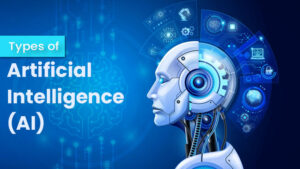
Cloud Computing Services
Introduction In the fast-paced digital world, cloud computing services have become the backbone of modern IT infrastructure. The ability to access computing power, storage, and
Supercharge Your Cloud Computing, Cybersecurity, Networking, Microsoft and AI Skills with Our Premium Plan! BE A MEMBER NOW!

Introduction In the fast-paced digital world, cloud computing services have become the backbone of modern IT infrastructure. The ability to access computing power, storage, and

Introduction In today’s rapidly evolving digital landscape, cybersecurity professionals face increasingly complex and sophisticated threats. As cyberattacks become more advanced, the need for highly skilled

Introduction Artificial Intelligence (AI) is revolutionizing the way we interact with technology to the extent that machines can do things that have been done traditionally
Table of Contents
Docker has exploded in popularity in today’s fast-paced IT industry. Organizations are incorporating it into their production environments regularly.
Docker is a free and open-source platform for developing, deploying, and running software. Docker allows you to quickly release software by separating your apps from your infrastructure. You may substantially minimize the time between writing code and running it in production by leveraging Docker’s approaches for quick shipping, testing, and deploying code. This article will discuss everything anyone needs to know about Docker at the beginning level.
If you are interested in learning more about Docker, IPSpecialist is considered the best place.
Docker is a platform for creating, delivering, and operating free and open source applications. Docker decouples your applications from your infrastructure, allowing you to swiftly release software. You may manage your infrastructure the same way you control your applications with Docker. You may drastically minimize the time between writing code and executing it in production by leveraging Docker’s approaches for shipping, testing, and deploying code quickly.
Container lifecycle management is made easier using Docker’s tools and framework:
One of the best aspects of open source is using whichever technology you want to achieve a task. The Docker engine is ideal for lone engineers that need a lightweight, clean testing environment but don’t require substantial orchestration. If Docker is installed on your system and everyone around you is familiar with the Docker toolchain, Docker Community Edition is a fantastic way to get started with containers.
Docker streamlines the development process by allowing developers to operate in standardized environments while delivering apps and services via local containers. Containers are extremely useful in Continuous Integration and Continuous Delivery (CI/CD) operations.
Consider the following circumstance as an example:
Docker is built on a client-server model. The Docker client communicates with the Docker daemon, which handles your Docker containers’ construction, execution, and distribution. You can execute the Docker client and daemon on the same machine or link a Docker client to a Docker daemon located elsewhere. The Docker client and daemon use a REST API to communicate across UNIX sockets or a network interface. Docker Compose is another Docker client that allows you to interact with applications made up of many containers.

The Docker client allows users to interface with Docker. The Docker client can connect to a daemon running on a different system or run on the same machine as the daemon. A docker client can communicate with several daemons at once. The Docker client is a Command-Line Interface (CLI) for building, running, and terminating Docker daemon applications.
The Docker Client’s main goal is to allow users to direct the download of images from a registry and have them run on a Docker host.
The Docker host provides a complete environment where applications can be executed and run. The Docker daemon includes images, containers, networks, and storage. The daemon, as previously stated, is in charge of all container-related tasks and accepts commands via the CLI or REST API. To manage its services, it can also communicate with other daemons. The Docker daemon fetches and generates container images based on the client’s request. After retrieving the desired image, it uses a collection of instructions known as a build file to create a functional model for the container.
When using Docker, you create and use images, containers, networks, volumes, plugins, etc. This section provides a quick overview of a few of those items.
A Docker image is a read-only template that contains instructions for constructing a Docker container. A lot of the time, an image is based on another image with some bit changes.
You can either make your photos or rely on those generated by others and stored in a registry. You create your image by writing a Dockerfile with a simple syntax for defining the steps required to create and run the image. Each Dockerfile instruction builds a layer in the image. Only the changed layers are rebuilt when you edit the Dockerfile and rebuild the image. Compared to other virtualization technologies, this is part of what makes pictures so light, tiny, and fast.
A container is a runnable image. You can start, stop, move, or destroy a container using the Docker API or CLI. You can add storage to a container, link it to one or more networks, or even create a new image from its current configuration.
By default, a container is often well separated from other containers and its host machine. You control how isolated a container’s network, storage, and other underlying subsystems are from other containers and the host machine.
Docker implements networking in an application-driven manner, giving developers various options while preserving enough abstraction. The default Docker network and user-defined networks are the two types of networks accessible. When you install Docker, you receive three distinct networks by default: none, bridge, and host. Docker’s network stack includes the none and host networks. The bridge network automatically builds a gateway and IP subnet, allowing all containers on the network to communicate with one another using IP addresses. This network is not frequently utilized since it is not scalable and limits network usability and service discovery.
You can store data in a container’s writable layer, but you’ll need a storage driver. It perishes whenever the container is not running because it is non-persistent. Furthermore, transferring this information is difficult. Docker has four options for persistent storage:
Data Volumes allow you to create persistent storage and rename volumes, list volumes and see which containers are associated with each volume. Data Volumes reside on the host file system, outside the containers, and are a reasonably efficient copy-on-write method.
A Data Volume Container is an alternate solution that involves hosting a volume in a dedicated container and mounting that volume to additional containers. The volume container can be shared across numerous containers in this case since it is distinct from the application container.
Another alternative is to use a container to mount a host’s local directory. The volumes in the above-described scenarios must be within the Docker volumes folder. However, Directory Mounts can utilize any directory on the Host computer as a source for the volume.
External storage platforms can be connected using Storage Plugins. These plugins transfer storage from the host to an external storage array or appliance.
Docker registries are services that allow you to store and download images from a central location. A Docker registry, in other terms, is a collection of Docker repositories that each host one or more Docker Images. Docker Hub and Docker Cloud are public registries, but private registries can also be used.
We can begin to grasp the surge in popularity of Docker containers, DevOps adoption, and microservices now that we have seen the many components of the Docker architecture and how they interact together. We can also observe how Docker makes underlying instances lighter, faster, and more resilient, simplifying infrastructure administration. Docker also isolates the application and infrastructure layers, allowing for much-needed mobility, cooperation, and control of the software delivery chain.
© 2025 All rights reserved | Privacy Policy | Terms and Conditions | Sitemap | Cookie Policy




